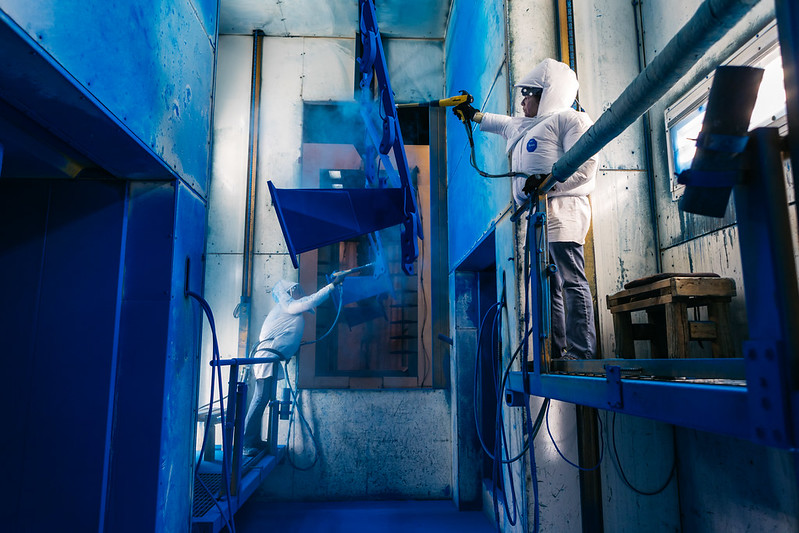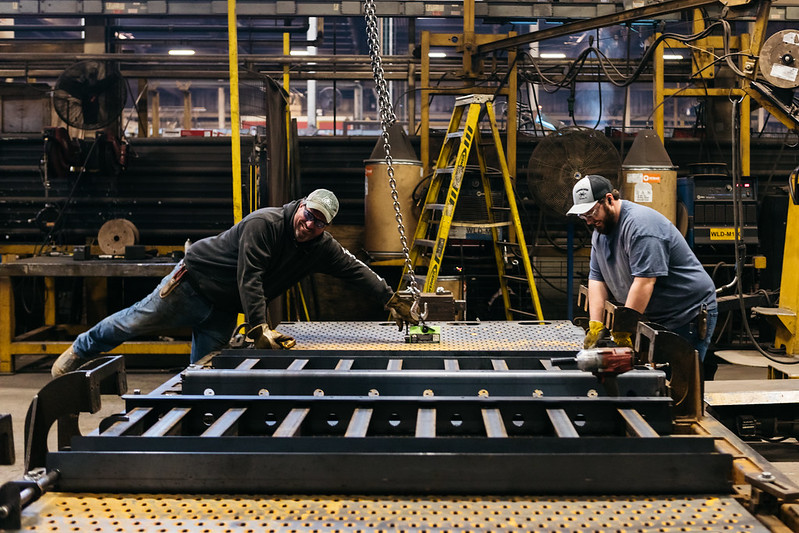The internal combustion engine has continually gotten more efficient and cleaner-running over the 150-plus years it has been relied upon. Now, as lawmakers and regulators look to further reduce emissions and overall reliance on fossil fuels, some might wonder what the future looks like for internal combustion (IC) engines in the agriculture equipment industry.
“When you’re talking about the internal combustion engine, it’s a very exciting and challenging policy area,” said Chris Walters, head of North American Public Affairs at AEM member company Iveco Group, the parent company of FPT Industrial, a manufacturer of engines and powertrains. We must balance environmental sustainability and our customers’ needs at the same time.”
In some instances, manufacturers and farmers may feel like there is a tug of war happening between those two needs.
“An EV product we make is two to three times the cost base of a standard machine with a diesel engine,” said Todd Stucke, president of Kubota Tractor Corp. “That doesn’t make economic sense for the customer, so the customer isn’t asking for that.”
Walters and Stucke weighed in on the topic of IC engines at AEM’s second Celebration of Modern Agriculture on the National Mall in Washington D.C., in May.
Another challenge with battery-electric power, at least in its current form, relates to power density. Crop farmers have very tight windows to work within, often dictated by weather and other variables. Working extremely long days is standard practice. That requires reliable equipment supported by reliable sources of refueling or recharging.
“If you look at the power density farmers need in remote areas, an IC engine is going to be a key part of things,” Stucke said. “There's also going to be the need for alternative fuels or alternative power sources. It will all depend on the application and what's best for a given application.”
It’s important for policymakers to recognize that “a farm” is not a monolith. In reality, farms do many different things in many different environments. So, equipment and powertrain manufacturers like FPT Industrial and Kubota are emphasizing the need to develop varied products to meet the varying needs of farmers. “That’s why we believe the internal combustion engine is still going to play a pivotal role in the agriculture space long-term,” Walters said.
“If you look at the power density farmers need in remote areas, an IC engine is going to be a key part of things. There's also going to be the need for alternative fuels or alternative power sources. It will all depend on the application and what's best for a given application.” -- Kubota Tractor Corp.'s Todd Stucke
The Solution is Multiple Solutions
When following an application-driven strategy, Stucke said there could be instances where battery-electric technology could be incorporated into a powertrain. A smaller tractor with minimal torque requirements is one example. At the same time, hybrids, hydrogen, and other alternative fuels are additional solutions that can help reduce emissions from equipment, while also providing the additional torque and power density a farmer typically needs.
Having a mix of options is something companies like Kubota and FPT Industrial are focused on right now. Walters stressed the importance of figuring out where each technology can be a good fit.
“We need to make sure our powertrain portfolio supports our customers’ productivity on farms. With our FPT Industrial brand, we’re investing in sort of an all-of-the-above approach. We’re invested in clean IC engines utilizing traditional and renewable versions of diesel. We’re also coming up with other nonroad alternative fuel solutions such as natural gas, leveraging our vast on-highway experience with this fuel. It’s particularly exciting when considering renewable natural gas,” Walters said. “We actually have some of those products today with the New Holland brand (tractors) that are being utilized in tractors on dairy farms that have digesters, which can readily make biomethane that can really reduce the environmental footprint of that jobsite.”
“We’re also coming up with alternative versions such as natural gas, particularly the exciting environmental prospects of renewable natural gas,” Walters continued. “We actually have some of those products with the New Holland brand (tractors) that are being utilized on dairy farms that have digesters, which can readily make biomethane that can really enhance the environmental footprint of that jobsite.”
Walters is also excited about hydrogen combustion technology. While most discussions over hydrogen are around the idea of using it as a fuel for fuel cells, there is also the capability of having an engine similar to a spark-ignited natural gas engine, only using liquid hydrogen fuel. “It sounds very H2 ICE. It sounds very futuristic, but it’s actually a technology we are testing today,” he added.
With hydrogen and many other alternative fuels, fueling infrastructure needs to be put in place in order for the fuel itself to become a viable option. And we’re not just talking about fueling stations along major interstates, since the agriculture industry is remote by nature. So, while increasingly promising, alternative fuels like hydrogen are still a bit on the horizon.
In the meantime, Stucke said there are other innovations happening that can make agriculture equipment more efficient, helping reduce fuel consumption and, in turn, emissions.
“Is an efficiency gain a better carbon-neutral position than replacing an engine? Offering multiple solutions is how we are going to reduce our footprint,” Stucke said.
“When you’re talking about the internal combustion engine, it’s a very exciting and challenging policy arena. We have to balance environmental sustainability and our customers’ needs at the same time.” -- Iveco Group's Chris Walters
Lack of Certainty Impedes Development
Developing and deploying a new energy source is a complex undertaking, regardless of the regulatory compliance component. Just the technical aspects and required investment can be daunting. Policymakers can lower the risk and encourage development by providing greater certainty to manufacturers.
“A clear vision with follow-through on what the renewable fuel or alternative fuel policies will be in the future will allow us to be on target to meet those expectations," said Walters. "When policies fluctuate or change completely, it’s very difficult for industry to know what to do. There is a lot of inertia that goes into what we’re doing from an R&D perspective. It’s not a short-term item. The fuels policy that impacts our industry should also be based on long-term thinking, and it should be very deliberate. That will give us the certainty we need to make investments in the right places.”
Regulation has always been a primary driving force behind major IC engine evolutions over the years. And according to Walters, regulations designed to protect the environment make sense. However, it’s important to make sure the regulations are crafted in a cost-effective, technology-neutral fashion.
Equally important is the idea that manufacturers are given ample time to prepare for new regulations. That allows manufacturers to develop reliable products that not only satisfy the new compliance standards, but also meet the needs of customers who rely on those products. On a positive note, Walters said the U.S. government historically has done a good job in developing rules while maintaining a level playing field among manufacturers. That’s a dynamic that is desperately needed moving forward so agriculture equipment manufacturers can meet both the sustainability and economic goals of farmers.
It’s also helpful when the agriculture industry can come together, as it does through AEM, to establish its expertise on the very products that are being regulated. A strong, unified voice helps ensure that the industry’s concerns are heard, lawmakers recognize the important role ag equipment plays in feeding the world, and how the industry is eager to comply in a fair, effective and sustainable way.
“The goal is to go on offense, as opposed to defense,” Stucke said. “When lawmakers are tasked with writing legislation, we want them to come to us for input — input that aligns what is best for our customers, the environment, North America and the U.S. By doing that, we can drive the industry in the right direction.”





